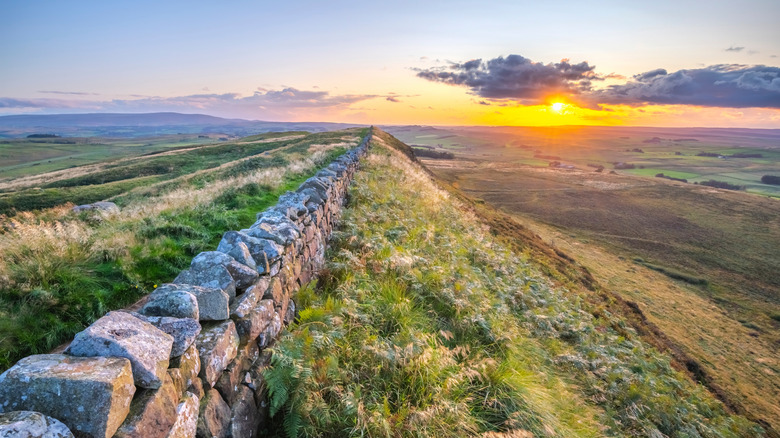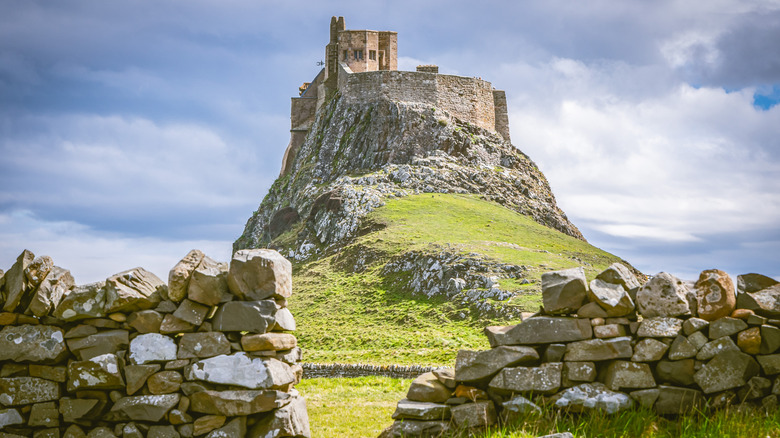While Southern England has fantastic historic destinations, like London, with Buckingham Palace and Westminster Abbey, and the city of Bath, home to one of the best preserved ancient Roman bath complexes in Europe, you should also make sure to explore Northeast England. It’s where Rick Steves, noted guidebook author, said you can find “some of England’s best historical sights,” via Rick Steves’ Europe.
One such sight is Hadrian’s Wall. The Roman Empire once stretched across a large part of Europe, with its northernmost boundary in what is now England. That boundary was marked by Hadrian’s Wall, a 73-mile-long fortification with multiple milecastles and forts, and it was manned by hundreds of soldiers. It took around six years to build the wall, with construction first starting around 122 A.D., and this massive defensive structure inspired the Wall in George R. R. Martin’s “Game of Thrones” series. You can still see major parts of it today.
It’s not very often that one can say they’ve walked across an entire country in less than 10 days, but you can when you take Hadrian’s Wall Path. The 84-mile walk starts from Wallsend, which is just outside of Newcastle-Upon-Tyne, England’s northernmost city with Victorian charm and great nightlife, and ends in the west in Bowness-on-Solway on the Cumbrian Coast. The wall itself is 73 miles long. However, the official National Trail that takes you from coast to coast adds another 11 miles. If you can’t do the whole thing, Steves recommends hiking the few miles from Steel Rigg to Housesteads Roman Fort. Other highlights of Hadrian’s Wall for Steves include the Roman Army Museum and Vindolanda’s museum. Each one gives you a unique glimpse into what life was like for Romans at the time.
Holy Island is a tidal island off the coast with a history going back hundreds of years
Another Rick Steves-approved historic destination in Northeast England is Holy Island. The small island off the coast is also known as Lindisfarne, and as Steve notes, “The island’s highlights include a priory, with an evocative field of ruined church walls and a tiny museum, a former coast-guard lookout tower offering expansive views, and a dramatically situated castle,” (via Rick Steves’ Europe). Irish monks lived on this island starting around 635 A.D., with Saint Cuthbert as one of the island’s most notable monks. In 793 A.D., it was attacked by Vikings. Fast forward some 350 years, and a priory was built on the island, the remains of which you can still see today. The impressive-looking castle on the island was built in the 1550s. Along with its historical sites, the island has several miles of trails as well as a number of cafes and pubs.
Getting to Holy Island takes some specialized planning. While many cities throughout England are accessible by train, Steves recommends a rental car to help you see more of England’s beautiful landscapes, and driving to Holy Island takes a bit more consideration since high tide cuts off safe access to the island for cars twice a day. Only drive the causeway with the help of the safe crossing times on the Northumberland County Council website. Do not try and push it, because people can and do get stuck.
Some people choose to walk to Holy Island on the Pilgrim’s Way, in the footsteps of monks and Vikings. Before the causeway was built, walking was the only way to and from the island. Use tide times (not the ones for cars!) to help plan your journey.




